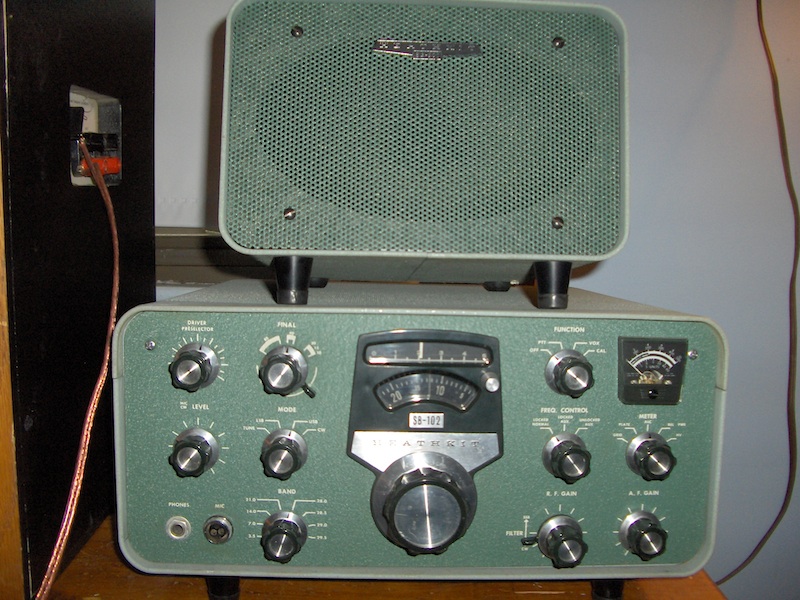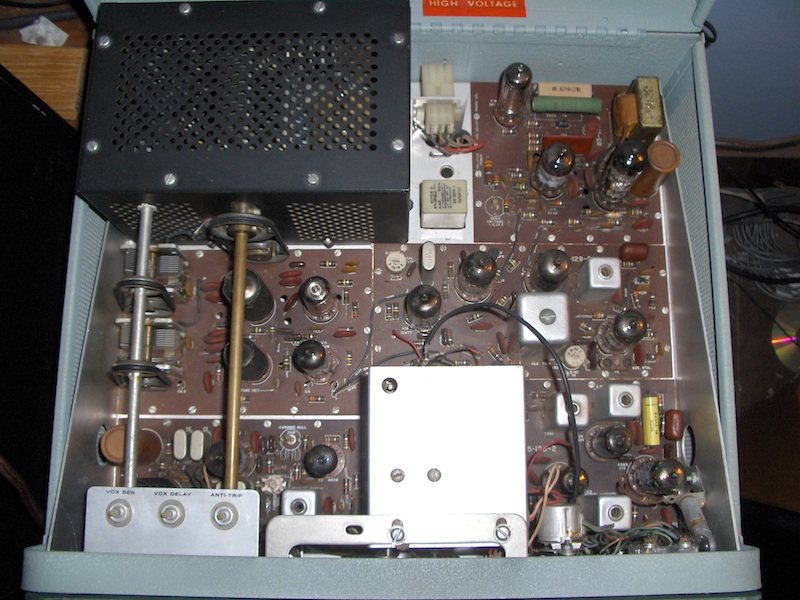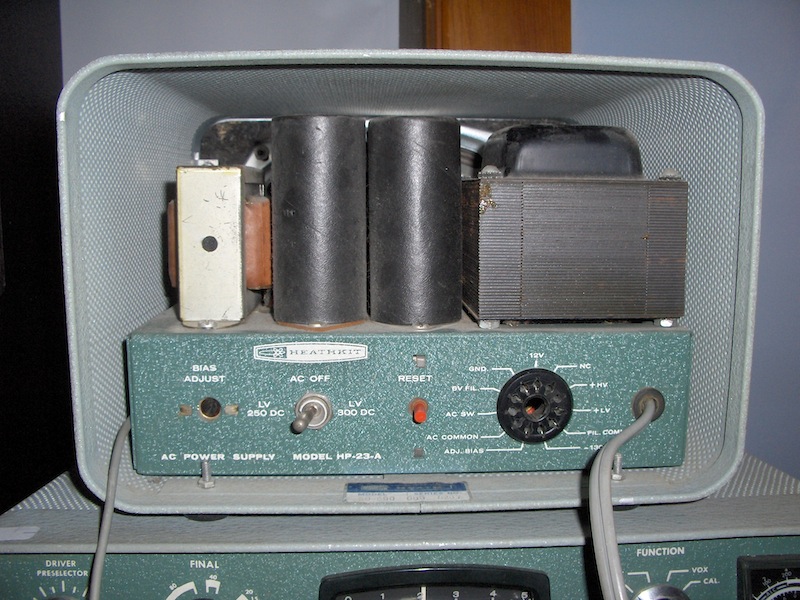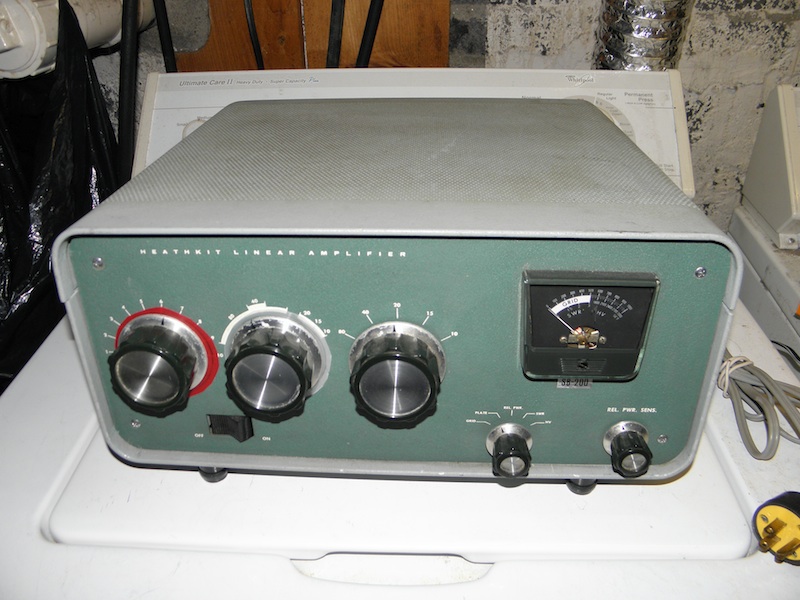You are using an out of date browser. It may not display this or other websites correctly.
You should upgrade or use an alternative browser.
You should upgrade or use an alternative browser.
Which circuits are the most complicated? Guitar amps, amateur radios or stereo receivers?
Did you recently watch a D-lab electronics video and leave a comment?
Dan
Dan
Ray Gianelli
Super Member
Generally, I'd say guitar amps are the simplest, then stereo, and amateur radio.
OTOH, there are complicated guitar amps and simple stereos. Amateur radio has both receive and transmit functions, so I consider that more complicated.
Just curious, why do you ask?
OTOH, there are complicated guitar amps and simple stereos. Amateur radio has both receive and transmit functions, so I consider that more complicated.
Just curious, why do you ask?
ducati_EL34
Addicted Member
I would not equate circuit complexity with poor component layout.
Amateur radio is more complex because of the number of tuned circuits involved for both receive and transmit functions.
A modern amateur transceiver has multiple modes:
CW
SSB (upper and lower)
FM
AM
Amateur radio is more complex because of the number of tuned circuits involved for both receive and transmit functions.
A modern amateur transceiver has multiple modes:
CW
SSB (upper and lower)
FM
AM
Last edited:
I would not equate circuit complexity with poor component layout.
Complex circuit perhaps not, complex to work on, definitely. There are some things that the layout makes the circuit bitchy though. Wires that have to be placed just so in order for it to work, stuff like that.
ducati_EL34
Addicted Member
Complex circuit perhaps not, complex to work on, definitely. There are some things that the layout makes the circuit bitchy though. Wires that have to be placed just so in order for it to work, stuff like that.
That sounds like poor design.
teal'c
Nuclear Cardiac Parent
Depends on what you're after. Kind of like rear drum brakes. Pointlessly complex to greatly reduce the amount of people willing to try the repair resulting in more money from people bringing them in.That sounds like poor design.
Good design for the manufacturer, bad design for the consumer.
ducati_EL34
Addicted Member
Depends on what you're after. Kind of like rear drum brakes. Pointlessly complex to greatly reduce the amount of people willing to try the repair resulting in more money from people bringing them in.
Good design for the manufacturer, bad design for the consumer.
Who makes a vehicle with drum brakes in the 21st century?
Pull up a chair, I feel this is gonna be a long one............
As others have said, in the general sense, it goes guitar amplifier -> stereo receiver -> 'amateur radio'
From there, it's complicated, as would befit a discussion about complications.
When it comes to audio gear, there are three basic components of any system, and they are power amplifier, preamplifier, and speaker(s). An integrated amplifier is made up of a preamplifier and power amplifier, while a receiver adds a tuner section to the mix.
A guitar amplifier, in the basic sense, is a form of integrated amplifier, sometimes with one or more speakers built-in. Some guitar amplifiers have built-in effects, but the basics are there.
An amateur radio setup, like an audio system, can be made up of several basic components. These are as follows, in terms of complication:
Linear amplifier -> Receiver -> Transmitter -> Transceiver
An amateur radio receiver is similar to an audio receiver, but meant to receive different bands (and with different features). A transmitter, essentially, is the opposite of a receiver, in that it outputs a signal on those bands. A transceiver, as the name may imply, combines a receiver and a transmitter in one box. Here is a picture of a typical tube-based ham radio transceiver from the late '60s/early '70s, a Heathkit SB-102 with its matching power supply/speaker:

The big knob in the center is for tuning, with the two dials located above it, and the bandswitch to its lower left. Some of the other knobs adjust the transmitter section, while others have more to do with general settings, and others adjust the speech input. The meter can be switched to indicate various things, including speech level and transmitter output current. Here is a photo of the insides:

16 tubes on five circuit boards, plus the two 6146 'final amplifier' tubes in the black HV cage, so 18 total. The power output of the transmitter is section is rated for 100W. The (solid-state) power supply is mounted in the back of the speaker cabinet pictured above, as seen here:

A linear amplifier is, essentially, the ham radio equivalent of a power amplifier, meant to boost the output of a smaller transmitter. Here's a photo of a typical linear amplifier, a Heathkit SB-200:

I don't have a photo of the insides of mine, but as seen here, it essentially consists of two large 572B tubes coupled to RF circuitry and a solid-state power supply. The large knobs on the front tune the output stage, while the smaller two control the meter, which helps monitor power output. Speaking of which, it's rated for 1,000 watts(!) on CW (morse code), though I'd more realistically be looking at 600-700W in voice operation.
-Adam KB1YTN
As others have said, in the general sense, it goes guitar amplifier -> stereo receiver -> 'amateur radio'
From there, it's complicated, as would befit a discussion about complications.
When it comes to audio gear, there are three basic components of any system, and they are power amplifier, preamplifier, and speaker(s). An integrated amplifier is made up of a preamplifier and power amplifier, while a receiver adds a tuner section to the mix.
A guitar amplifier, in the basic sense, is a form of integrated amplifier, sometimes with one or more speakers built-in. Some guitar amplifiers have built-in effects, but the basics are there.
An amateur radio setup, like an audio system, can be made up of several basic components. These are as follows, in terms of complication:
Linear amplifier -> Receiver -> Transmitter -> Transceiver
An amateur radio receiver is similar to an audio receiver, but meant to receive different bands (and with different features). A transmitter, essentially, is the opposite of a receiver, in that it outputs a signal on those bands. A transceiver, as the name may imply, combines a receiver and a transmitter in one box. Here is a picture of a typical tube-based ham radio transceiver from the late '60s/early '70s, a Heathkit SB-102 with its matching power supply/speaker:

The big knob in the center is for tuning, with the two dials located above it, and the bandswitch to its lower left. Some of the other knobs adjust the transmitter section, while others have more to do with general settings, and others adjust the speech input. The meter can be switched to indicate various things, including speech level and transmitter output current. Here is a photo of the insides:

16 tubes on five circuit boards, plus the two 6146 'final amplifier' tubes in the black HV cage, so 18 total. The power output of the transmitter is section is rated for 100W. The (solid-state) power supply is mounted in the back of the speaker cabinet pictured above, as seen here:

A linear amplifier is, essentially, the ham radio equivalent of a power amplifier, meant to boost the output of a smaller transmitter. Here's a photo of a typical linear amplifier, a Heathkit SB-200:

I don't have a photo of the insides of mine, but as seen here, it essentially consists of two large 572B tubes coupled to RF circuitry and a solid-state power supply. The large knobs on the front tune the output stage, while the smaller two control the meter, which helps monitor power output. Speaking of which, it's rated for 1,000 watts(!) on CW (morse code), though I'd more realistically be looking at 600-700W in voice operation.
-Adam KB1YTN
DaveVoorhis
Addicted Member
A number of manufacturers, but their vehicles typically only have drums in the rear because much less braking force is needed than in front and drum brakes make it easy to integrate handbrake mechanisms.Who makes a vehicle with drum brakes in the 21st century?
Even when the rear stoppers are disk, there's often an integrated drum handbrake in addition to the disk mechanism.
baretta
Active Member
Yes. That was me.Did you recently watch a D-lab electronics video and leave a comment?
Dan
baretta
Active Member
I'm trying to learn how to maintain and fix my guitar amps. Right now I can change the tubes and adjust the bias. I also have a stereo receiver and cassette deck that needs some work.Generally, I'd say guitar amps are the simplest, then stereo, and amateur radio.
OTOH, there are complicated guitar amps and simple stereos. Amateur radio has both receive and transmit functions, so I consider that more complicated.
Just curious, why do you ask?
ducati_EL34
Addicted Member
A number of manufacturers, but their vehicles typically only have drums in the rear because much less braking force is needed than in front and drum brakes make it easy to integrate handbrake mechanisms.
Even when the rear stoppers are disk, there's often an integrated drum handbrake in addition to the disk mechanism.
I know they are still used on the rear. My question was not worded properly. It should have read, “who would buy a car with drum brakes in the 21st century?” Those are usually economy cars that are just boring appliances.
DaveVoorhis
Addicted Member
Yes, it's usually budget cars and trucks, but that's (a) all some folks can afford and (b) some folks have no interest in vehicles except as appliances and would rather spend money elsewhere.I know they are still used on the rear. My question was not worded properly. It should have read, “who would buy a car with drum brakes in the 21st century?” Those are usually economy cars that are just boring appliances.
Ray Gianelli
Super Member
Guitar amps tend to suffer from different failures than stereo equipment by virtue of their different applications. Stereo gear tends to be set up and left alone for months or even years. In contrast, guitar amps are moved around and cords are plugged in and removed often.I'm trying to learn how to maintain and fix my guitar amps. Right now I can change the tubes and adjust the bias. I also have a stereo receiver and cassette deck that needs some work.
With that in mind, it's quite common to find solder joints from the input jacks are broken, especially in designs like newer Fender amps, where the jack solders directly to the PCD. Mesa still uses flying leads (or at least they did last time I checked) to controls and jacks to the PCB, thus avoiding this type of failure.
Another common point of failure is shock induced. I know from personal experience that my amp was not placed in my vehicle at the end of the gig with the same care that it was put in the car at my house. At 4 AM, it was pretty much tossed into the car.
Failures from shock can be tubes, components developing cracked solder joints or coming completely off the board, among other things.
Last edited:
Similar threads
- Replies
- 2
- Views
- 162
- Replies
- 38
- Views
- 2K
- Replies
- 27
- Views
- 1K

